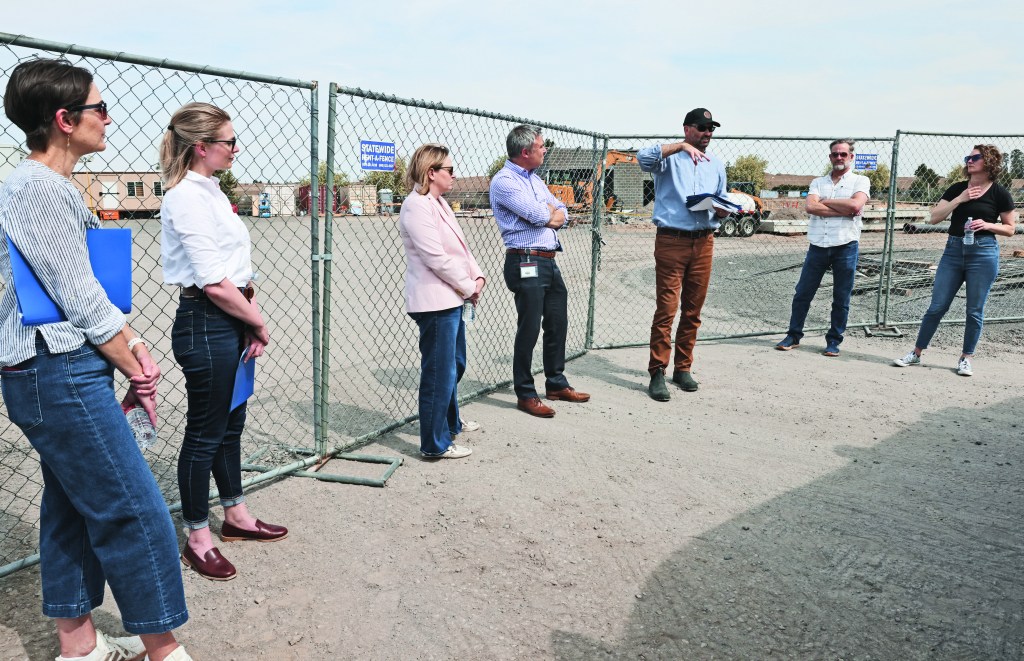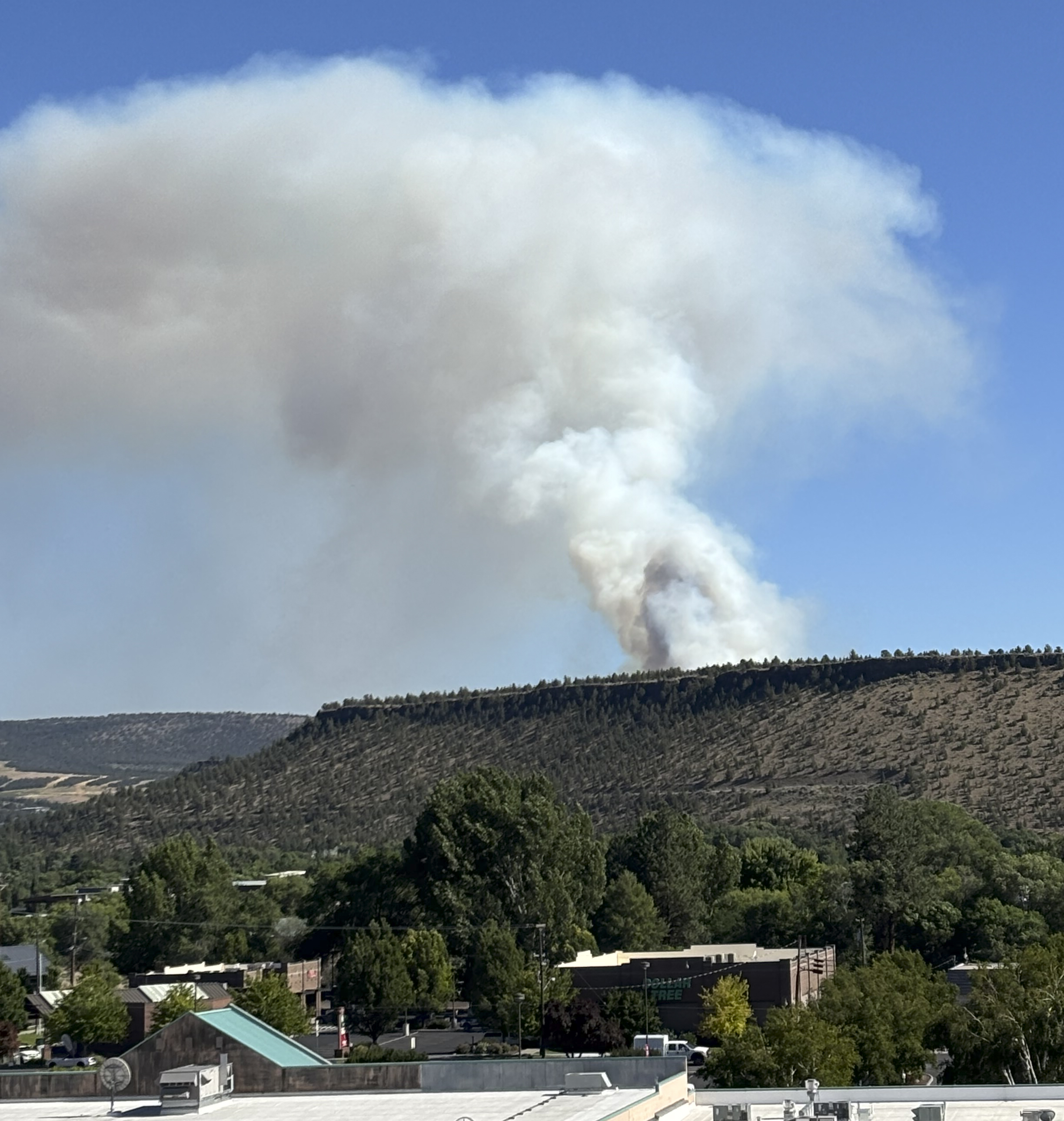Central Oregon awaits fix to state transportation funding
Published 2:17 pm Tuesday, May 13, 2025

- Rep. Emerson Levy, D-Bend, listens to the city of Bend's Chief Operations Officer Russell Grayson talk about the city's funding needs for infrastructure on a recent tour as cities look to rally support for sustainable transportation funding. 05/09/25 (Dean Guernsey/The Bulletin)
As the 2025 Oregon legislative session races past the halfway mark, Central Oregon leaders have their eyes on the efforts of lawmakers in Salem to pass a bill that will restore funding for roads across the state for years to come.
Democrats, who control the legislature, introduced a framework for a transportation package last month that would inject $1.9 billion every two years for maintenance of the state’s transportation system through an increase in taxes and fees.
But a bill has yet to be introduced. As Central Oregon continues to grow, cities, counties and other transportation agencies are counting on a reliable stream of funding from the state.
Trending
City officials from Bend and Redmond hosted Rep. Emerson Levy and Sen. Anthony Broadman — both of Bend — on a transportation tour of the cities last week, with lawmakers hammering home the gravity of the situation.
“We’ve kicked the can for too long on operations and maintenance,” Broadman, a former Bend City Councilor, said after the tour. “The reality is, we need to invest in making sure that our crumbling infrastructure doesn’t get to a point where replacement is the only option. We need to basically shore up the system so that we don’t have things collapsing.”
Based on the current framework, the vast majority of revenue raised would bolster the State Highway Fund, which is split between the Oregon Department of Transportation and cities and counties for road maintenance, including paving, plowing, restoring bridges, culverts, bicycle and pedestrian infrastructure, and fixing other items like rumble strips, signals and unstable slopes.
ODOT officials have called for a new way to generate revenue for the fund, mostly due to declining revenues from the state’s gas tax because of a rise in electric vehicles. The Democrats’ proposal suggests raising the gas tax from 40 cents to 60 cents per gallon over the next seven years through a phased approach. The tax would then be indexed to rise along with inflation. It also suggests raising registration and title fees, phasing in new road user fees and bumping other taxes to support transit and rail.
Oregon Republicans have responded with a proposal of their own that would slash $730 million in state funding for programs like transit, bicycle projects and agency staff and redirect it to basic maintenance.
A big piece of the pie
Trending
A portion of cities’ budgets for road operations comes from state funding. Other large portions come from the cities’ general funds, grants or fees.
Bend receives about $10 million per year from the state fund, or about 39% of its street maintenance budget.
In Bend — and 30 other cities in Oregon — residents and businesses help pay for maintenance. The city of Bend passed a new Transportation Utility Fee last year to help stabilize declining maintenance revenues, aiming to collect $15 million per year through a phased implementation. In the first year the fee collected $5 million, or about 19% of the city’s street maintenance budget. The city recently approved the second phase of the fee, which is projected to collect $10 million. Based on the city’s proposed budget, the fee would jump to account for 36% of the street maintenance budget, roughly the same portion as the state fund. That would allow the city to pay $2.4 million less from its general fund for street maintenance and operations.
Stabilizing the state funding resources is key for cities, Broadman said.
“If Bend can’t bank on the state being a good partner in the transportation system over the next decade, 20 years, it puts us in a really difficult situation,” he said.
Bend City Manager Eric King said costs to maintain road have roughly doubled in the last 10 years.
“We’re very insistent on keeping that proportionate share, he said. “(Because of) inflationary costs, we’re having to stretch that dollar. Costs for maintenance are going up.”
Project funding not included
This year’s transportation package is focused on improving safety and connectivity. Unlike the 2017 package passed by the Oregon legislature, a 2025 package is unlikely to include earmarks for specific construction projects, Broadman said.
That package — the last time the state approved a gas tax hike — helped pay for a $190 million highway reconstruction project on the north side of Bend that was completed in December. It was the only local project paid for with funding from the last package.
Major projects in other parts of the state funded through the 2017 bill, such as the Rose Quarter Improvement Project in Portland along I-5, saw huge cost increases, have yet to be completed and now need more funding help from the 2025 package.
That’s one reason lawmakers are staying away from funding specific capital projects through the package, Levy said.
“That method does not inspire confidence in the agency or the transportation process,” Levy said. “It’s a good thing to move off of.”
“There are different ways to get there outside of the transportation package,” Levy added.
Because of economic uncertainties around tariffs and federal funding, “We’re in a really precarious budget situation,” Levy said.
The city of Bend is looking to the state to assist with funding several large infrastructure projects to catalyze development in southeast Bend, where it is juggling development plans for a concoction of landowners. There are about 7,400 homes slated for development there. State funding for infrastructure — including a pair of $3 million roundabouts in the area — would give a clearer picture of how the projects can proceed and get housing on the ground faster, said Russ Grayson, chief operations officer with the city.
Grayson said the city has “tapped every resource” of local funding to pay for transportation, including the $190 million general obligation bond voters approved in 2020, increases in charges on development and tax increment financing.
Short-term, long term concerns remain
Residents and businesses in Bend are feeling the impacts of cost increases across the board, and are likely to feel the impacts of higher taxes and fees proposed in the package, said Sara Odendahl, government affairs director with the Bend Chamber of Commerce.
But Central Oregon businesses also need state roads in good shape to get products and tourists to the region, Odendahl said. The way the state funds maintenance is in need of a major overhaul “and while the package proposed by the Legislature does provide some relief, it is merely a Band-Aid. We continue to have concerns about sustainability and safety for rapidly growing communities such as Bend,” she said in an email.
Along with lingering concerns about long-term sustainability are those about meeting legislative deadline. People in the transportation world are increasingly concerned that time is running out to pass a package this session, said Bob Townsend, a former ODOT official in Central Oregon who now leads the local transit agency. It’s challenging to find a bill that fits the entire state, especially with leftover projects from the 2017 bill requiring significantly more funding, he said.
“It’s important that we have time to fully vet the transportation package but we still have several weeks to go get it done,” Rep. Levy said in a text message on Tuesday.

Greenwood Avenue looking west from Pilot Butte in Bend. 04/10/25 (Dean Guernsey/The Bulletin)









